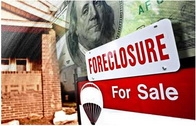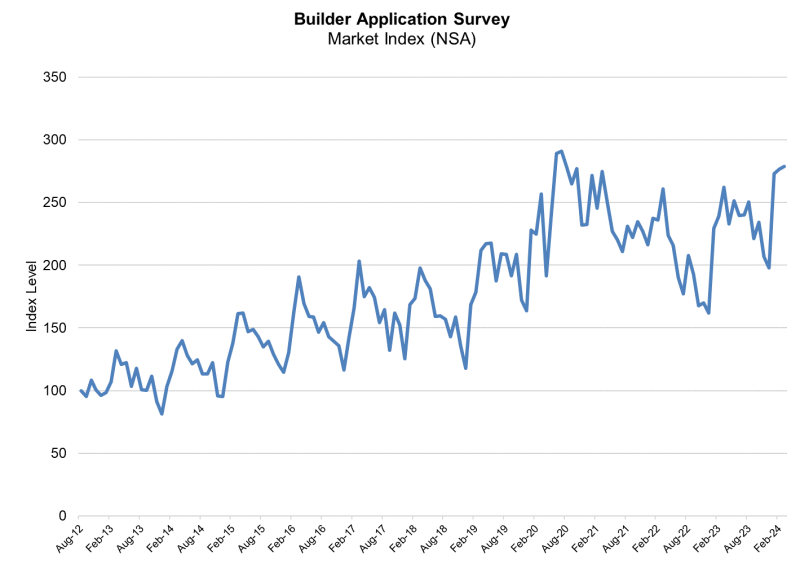Advertisement
Delinquencies and foreclosures increase in latest MBA delinquency survey

The delinquency rate for mortgage loans on one-to-four-unit residential properties increased to a seasonally adjusted rate of 10.06 percent of all loans outstanding as of the end of the first quarter of 2010, an increase of 59 basis points from the fourth quarter of 2009, and up 94 basis points from one year ago, according to the Mortgage Bankers Association's (MBA) National Delinquency Survey. The non-seasonally adjusted delinquency rate decreased 106 basis points from 10.44 percent in the fourth quarter of 2009 to 9.38 percent this quarter.
The percentage of loans on which foreclosure actions were started during the first quarter was 1.23 percent, up three basis points from last quarter but down 14 basis points from one year ago.
The delinquency rate includes loans that are at least one payment past due but does not include loans in the process of foreclosure. The percentage of loans in the foreclosure process at the end of the first quarter was 4.63 percent, an increase of five basis points from the fourth quarter of 2009 and 78 basis points from one year ago. This represents another record high.
The combined percentage of loans in foreclosure or at least one payment past due was 14.01 percent on a non-seasonally adjusted basis, a decline from 15.02 percent last quarter.
The serious delinquency rate, the percentage of loans that are 90 days or more past due or in the process of foreclosure, was 9.54 percent, a decrease of 13 basis points from last quarter, but an increase of 230 basis points from the first quarter of last year.
"The issue this quarter is that the seasonally adjusted delinquency rates went up while the unadjusted rates went down," said Jay Brinkmann, MBA's chief economist. "Delinquency rates traditionally peak in the fourth quarter and fall in the first quarter and we saw that first quarter drop in the data. The question is whether the drop represents anything more than a normal seasonal decline or a more fundamental improvement. Most importantly, the normal seasonal drop is coming right at the point where we believe delinquencies could potentially be declining and the problem for the statistical models is determining which is which."
"The seasonal models say it is not a fundamental improvement and that the seasonal drop should have been larger to represent a true improvement, hence the increase in the seasonally adjusted numbers," said Jay Brinkmann, MBA's chief economist. "Yet there is reason to believe the seasonally adjusted numbers could be too high. Simply put, fundamental market factors may be having a greater influence on the delinquency rates than is normally the case, but mathematical models have difficulty discerning the difference over a short period of time. Since discerning what represents a fundamental improvement versus a simply seasonal improvement is probably more of an art than a mathematical science at this point, the seasonally adjusted numbers should be viewed with a degree of caution."
The seasonally adjusted delinquency rate increased for all loan types with the exception of Federal Housing Administration (FHA) loans. On a seasonally adjusted basis, the delinquency rate stood at 6.17 percent for prime fixed loans, 13.52 percent for prime adjustable-rate mortgage (ARM) loans, 25.69 percent for sub-prime fixed loans, 29.09 percent for sub-prime ARM loans, 13.15 percent for FHA loans, and 7.96 percent for U.S. Department of Veterans Affairs (VA) loans. On a non-seasonally adjusted basis, the delinquency rate fell for all loan types.
The foreclosure starts rate increased for all loan types with the exception of subprime loans. The foreclosure starts rate increased six basis points for prime fixed loans to 0.69 percent, 17 basis points for prime ARM loans to 2.29 percent, 18 basis points for FHA loans to 1.46 percent, and eight basis points for VA loans to 0.89 percent. For subprime fixed loans, the rate decreased nine basis points to 2.64 percent and for subprime ARM loans the rate decreased 39 basis points to 4.32 percent.
Given the challenges in interpreting the true seasonal effects in these data when comparing quarter to quarter changes, it is important to highlight the year over year changes. The non-seasonally adjusted delinquency rate increased 151 basis points for prime fixed loans, 172 basis points for prime ARM loans, 343 basis points for sub-prime fixed loans, and 244 basis points for subprime ARM loans from the first quarter of 2009. The delinquency rate was 48 basis points lower for FHA loans and 12 basis points for VA loans relative to the same quarter a year ago.
The non-seasonally adjusted foreclosure starts rate increased eight basis points for prime fixed loans, 36 basis points for FHA loans and 17 basis points for VA loans compared to the first quarter of 2009. The rate decreased 22 basis points for prime ARM loans, 10 basis points for subprime fixed loans, and 259 basis points for subprime ARM loans on a year over year basis.
About half of the states saw increases in the rate of foreclosure starts on a year over year basis, with the largest increases coming in Oregon, North Carolina and Maryland. The largest decreases were in Florida, Rhode Island and California. Almost all of the states saw year-over year decreases in subprime ARM foreclosure starts while almost all had increases in prime fixed-rate and FHA foreclosure starts.
For more information, visit www.mortgagebankers.org.
About the author





